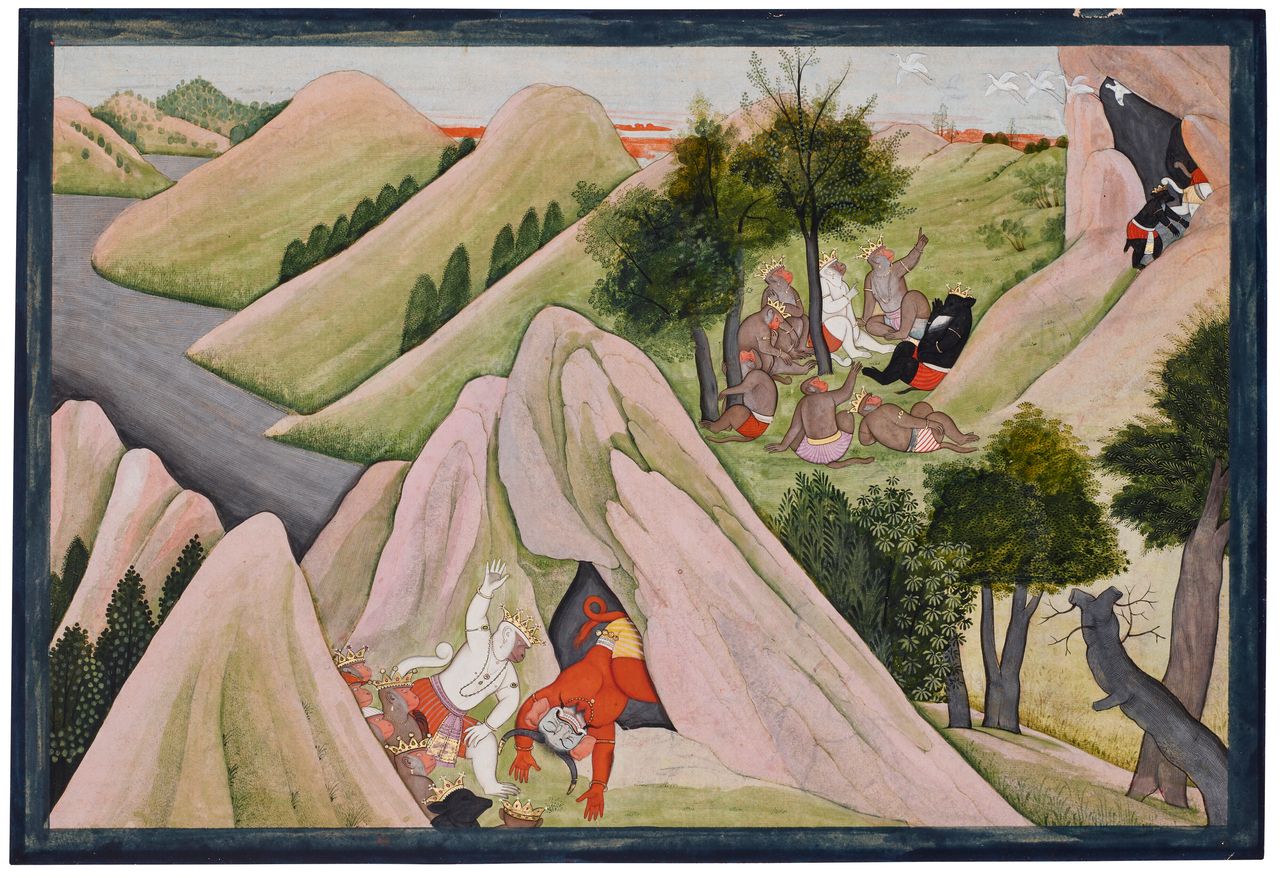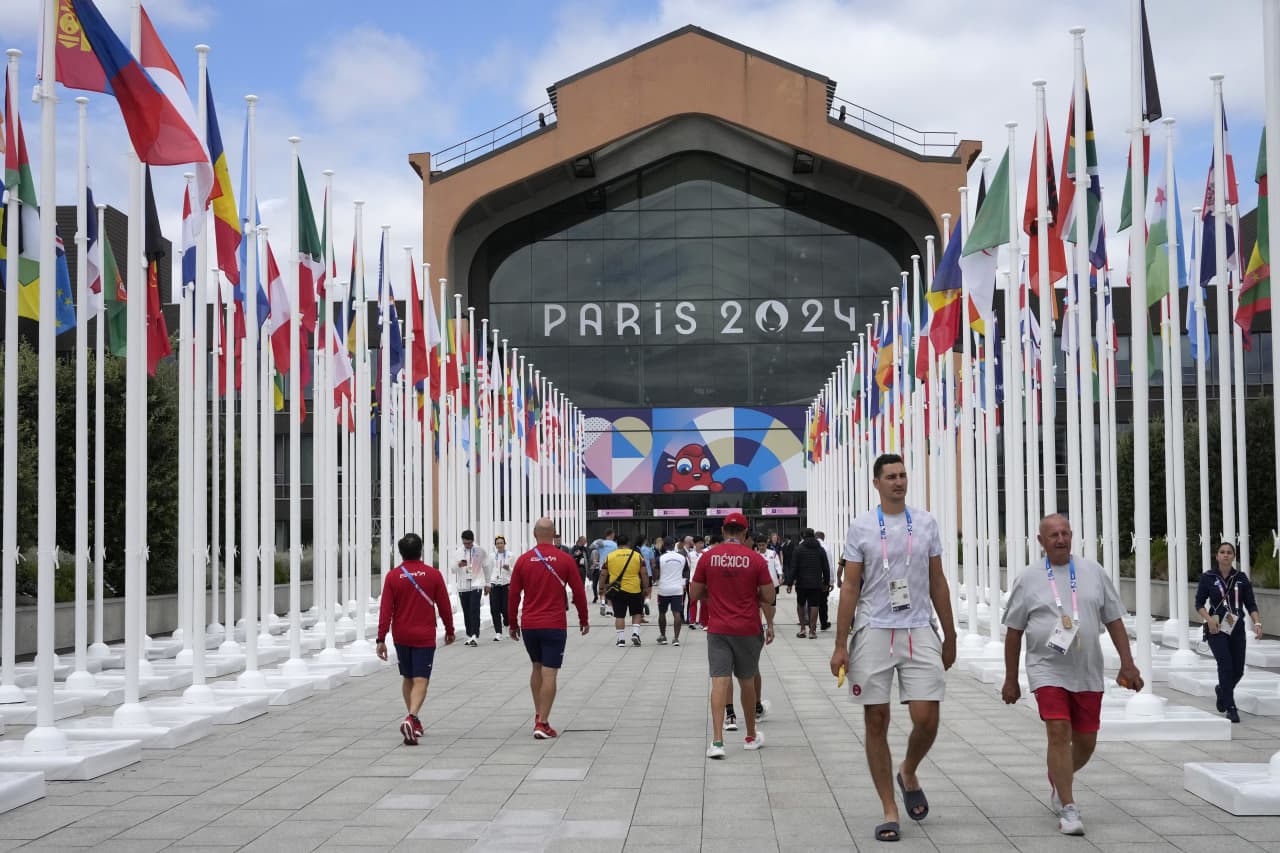Christie’s will feature classical Indian art created from the third century through the beginning of the 20th century in a standalone sale for the first time this September.
The online auction is a break with the traditional approach of including Indian, Himalayan, and Southeast Asian art in one sale and responds to collectors of modern and contemporary Indian art who are “interested in following art history backwards,” finding links in the art of recent time to the faraway past, says Tristan Bruck, head of sale.
The previous model better suited “an old-fashioned collector who was buying works in all three sub-niches,” Bruck says. “A collector who bought Indian paintings, for instance, was likely to also go out and buy a Tibetan thangka (or tapestry).”
The Arts of India sale, open from 10 a.m. Sept. 13 to 9 a.m. Sept. 27, is paying particular attention to works that transition Indian art from the classical to the modern era, a period that until now hadn’t received close attention, he says.

Christie’s Images Ltd. 2023
In the midst of the online offering, on the morning of Sept. 20, Christie’s also will hold a live sale in New York of mostly modern but also contemporary South Asian art, which is predominately from India in addition to Pakistan, Bangladesh, and Sri Lanka.
Christie’s expectation is that collectors who attend, or dial into the modern and contemporary sale via phone or online, might be intrigued to also take a look at the online sale, where earlier Indian works provide inspiration for colours, style, and themes by 20th-and 21st-century artists. The auction house will also display the works together in its Rockefeller Center galleries in New York.
Collectors “realize that this art wasn’t created in a vacuum,” says Nishad Avari, Christie’s head of South Asian modern and contemporary art. “There’s thousands of years of tradition that modern and contemporary artists in the region drew on and continue to draw from.”
Consider Maqbook Fida Husain’s Untitled (Naga), a massive work of five female figures and a serpent (or naga) painted around 1971. The painting portrays four of the women with breaks at the neck, hips, and knees, alluding to physical forms expressed in temple sculpture of the Gupta Empire from the fourth- to early sixth century, Avari says.
The painting, expected to achieve between US$700,000 and US$1 million, likely was created to commemorate the launch of a monograph of Husain’s work that was published by Harry N. Abrams, who acquired the painting, Christie’s said in a catalog note. Abrams, a vast collector who also published art and illustrated books about Old Masters through artists such as Robert Rauschenberg, had displayed the work in his offices and later in his family’s home for more than 50 years.

Courtesy of Christie’s Images Ltd. 2023
Going further back in time within the Arts of India sale is a Pichvai painting of Vishvarupa—a form of the god Krishna—painted in the 18th to 19th century. The work, originally a temple banner, is a traditional Indian form and concept, “but by the 19th century you can see artists are working with different types of perspective,” Bruck says. They are also using a more modern color palette, with vibrant pinks and blues, and the canvas is large—about six by eight feet.
“This could go in a gallery with the modern works, which are on these large canvases,” Bruck says. The painting “tells a great story alongside 20th-century work, being able to see the origin of a lot of these concepts.”
The Pichvai—a term that refers to devotional folk art paintings—is estimated to achieve at least US$120,000.
Another popular category are so-called company-school paintings that came out of India’s princely courts beginning with the imperial Mughal around 1600 through to the 19th century, when they were commissioned by British administrators, Bruck says.
Each court had its own style that may have been influenced by other courts and changed over time, he says. The works, often called miniature paintings because of the small, precise figures and scenes they depicted, were typically created in albums, or series, making them highly collectible.
Until recently, a group of collectors had focused solely on this sector somewhat in isolation, but Bruck says, Christie’s is seeing an “explosion of interest” in court painting albums, such as an illustration from the “Bharany” Ramayan series that is being offered in the upcoming sale.
A collector “can see what the other pages from that album have sold for and sort of put them together as an album in [their] mind and ideally collect more than one or try to get a few from the set,” Bruck says. The fact they exist within series also gives collectors confidence in what to pay, he adds.

Christie’s Images Ltd. 2023
The Bharany Ramayan work in the sale, titled The Monkey Army Intruding Upon a Demon’s Cave, from “Punjab Hills, Kangra or Guler, first generation after Nainsukh or Manaku,” from 1775-1780, is being offered for a minimum of US$80,000. A Patna court painting of a marriage procession at night, from around 1810 and painted in a more European style, is being offered for a minimum of US$10,000.
For many collectors, those price points are more accessible than, for example, the estimated US$250,000 they would pay for a work by Sayed Haider Raza, whose Rajasthan, 1983, is included in the modern and contemporary sale. The structure and primary-colour palette of Rajasthan, in fact, is intentionally drawn from court paintings, Avari says.
“The way in which their discrete sections, cells, in which he paints and the way in which he surrounds it with the red border is a direct reference to Pahari or Rajasthani (court) painting,” he says.
When collectors can see the court paintings that inspired a modern work they own, and they can acquire them for far less, “why not hang them side-by-side?” Avari says.
 Copyright 2020, Dow Jones & Company, Inc. All Rights Reserved Worldwide. LEARN MORE
Copyright 2020, Dow Jones & Company, Inc. All Rights Reserved Worldwide. LEARN MORE
What a quarter-million dollars gets you in the western capital.
Alexandre de Betak and his wife are focusing on their most personal project yet.
As Paris makes its final preparations for the Olympic games, its residents are busy with their own—packing their suitcases, confirming their reservations, and getting out of town.
Worried about the hordes of crowds and overall chaos the Olympics could bring, Parisians are fleeing the city in droves and inundating resort cities around the country. Hotels and holiday rentals in some of France’s most popular vacation destinations—from the French Riviera in the south to the beaches of Normandy in the north—say they are expecting massive crowds this year in advance of the Olympics. The games will run from July 26-Aug. 1.
“It’s already a major holiday season for us, and beyond that, we have the Olympics,” says Stéphane Personeni, general manager of the Lily of the Valley hotel in Saint Tropez. “People began booking early this year.”
Personeni’s hotel typically has no issues filling its rooms each summer—by May of each year, the luxury hotel typically finds itself completely booked out for the months of July and August. But this year, the 53-room hotel began filling up for summer reservations in February.
“We told our regular guests that everything—hotels, apartments, villas—are going to be hard to find this summer,” Personeni says. His neighbours around Saint Tropez say they’re similarly booked up.
As of March, the online marketplace Gens de Confiance (“Trusted People”), saw a 50% increase in reservations from Parisians seeking vacation rentals outside the capital during the Olympics.
Already, August is a popular vacation time for the French. With a minimum of five weeks of vacation mandated by law, many decide to take the entire month off, renting out villas in beachside destinations for longer periods.
But beyond the typical August travel, the Olympics are having a real impact, says Bertille Marchal, a spokesperson for Gens de Confiance.
“We’ve seen nearly three times more reservations for the dates of the Olympics than the following two weeks,” Marchal says. “The increase is definitely linked to the Olympic Games.”

Getty Images
According to the site, the most sought-out vacation destinations are Morbihan and Loire-Atlantique, a seaside region in the northwest; le Var, a coastal area within the southeast of France along the Côte d’Azur; and the island of Corsica in the Mediterranean.
Meanwhile, the Olympics haven’t necessarily been a boon to foreign tourism in the country. Many tourists who might have otherwise come to France are avoiding it this year in favour of other European capitals. In Paris, demand for stays at high-end hotels has collapsed, with bookings down 50% in July compared to last year, according to UMIH Prestige, which represents hotels charging at least €800 ($865) a night for rooms.
Earlier this year, high-end restaurants and concierges said the Olympics might even be an opportunity to score a hard-get-seat at the city’s fine dining.
In the Occitanie region in southwest France, the overall number of reservations this summer hasn’t changed much from last year, says Vincent Gare, president of the regional tourism committee there.
“But looking further at the numbers, we do see an increase in the clientele coming from the Paris region,” Gare told Le Figaro, noting that the increase in reservations has fallen directly on the dates of the Olympic games.
Michel Barré, a retiree living in Paris’s Le Marais neighbourhood, is one of those opting for the beach rather than the opening ceremony. In January, he booked a stay in Normandy for two weeks.
“Even though it’s a major European capital, Paris is still a small city—it’s a massive effort to host all of these events,” Barré says. “The Olympics are going to be a mess.”
More than anything, he just wants some calm after an event-filled summer in Paris, which just before the Olympics experienced the drama of a snap election called by Macron.
“It’s been a hectic summer here,” he says.

AFP via Getty Images
Parisians—Barré included—feel that the city, by over-catering to its tourists, is driving out many residents.
Parts of the Seine—usually one of the most popular summertime hangout spots —have been closed off for weeks as the city installs bleachers and Olympics signage. In certain neighbourhoods, residents will need to scan a QR code with police to access their own apartments. And from the Olympics to Sept. 8, Paris is nearly doubling the price of transit tickets from €2.15 to €4 per ride.
The city’s clear willingness to capitalise on its tourists has motivated some residents to do the same. In March, the number of active Airbnb listings in Paris reached an all-time high as hosts rushed to list their apartments. Listings grew 40% from the same time last year, according to the company.
With their regular clients taking off, Parisian restaurants and merchants are complaining that business is down.
“Are there any Parisians left in Paris?” Alaine Fontaine, president of the restaurant industry association, told the radio station Franceinfo on Sunday. “For the last three weeks, there haven’t been any here.”
Still, for all the talk of those leaving, there are plenty who have decided to stick around.
Jay Swanson, an American expat and YouTuber, can’t imagine leaving during the Olympics—he secured his tickets to see ping pong and volleyball last year. He’s also less concerned about the crowds and road closures than others, having just put together a series of videos explaining how to navigate Paris during the games.
“It’s been 100 years since the Games came to Paris; when else will we get a chance to host the world like this?” Swanson says. “So many Parisians are leaving and tourism is down, so not only will it be quiet but the only people left will be here for a party.”















